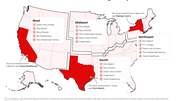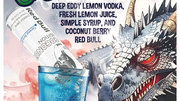Operations
Staffing, food costs force price hikes as restaurants 'control the controllables'

October 28, 2025
U.S. food and beverage operators are relying on technology and diversification to manage a "double squeeze" from rising labor and ingredient costs, according to The Food & Beverage Industry Report 2025 from Expert Market, sponsored by Toast.
It reveals that despite persistent challenges like labor shortages, 71% of F&B professionals expressed a positive business outlook for the next 12 months. This resilience is driven by operators who are focusing on the levers they can control, such as pricing and technology adoption.
"The operators winning right now are the ones who can 'control the controllables,' such as pricing, product mix and helpful technology, to protect profitability," Expert Market's Senior Communications and Logistics Expert Matt Reed wrote in the report.
Core challenges: Labor, ingredients
Labor remains the top pain point, with 38% of the 628 surveyed F&B professionals citing recruitment, retention and training as their most significant challenge. Over 85% say labor issues actively affect daily operations.
To offset these internal and external pressures, operators are raising consumer prices:
- 62% have raised menu prices specifically to offset wage increases.
- 76% said rising ingredient costs, the single biggest profitability threat, significantly impact their margins.
- 60% reported being directly affected by tariffs, with the most common impact being increased menu prices (47%).
This aggressive pricing strategy comes as operators grapple with shifting consumer expectations, where affordability/value is the hardest expectation to meet.
Tech investment, operational discipline
Investment in software and technology is near-universal, with 98% of professionals reporting an investment in the past year. This spending is concentrated on "core stack" tools that improve efficiency and cost control:
- 76% have implemented POS systems.
- 56% use employee scheduling software.
Despite this, the adoption of full automation remains early, with 38% of businesses not currently using automation. Cost-cutting measures are also creating risk, as 74% of businesses have reduced investment, with the steepest cuts hitting people and HR (53%).
Diversification
Operators are also diversifying revenue streams to buffer volatility:
- 33% are expanding off-premise dining.
- 27% are adding retail and packaged goods.
- 21% are introducing experiential offerings.












